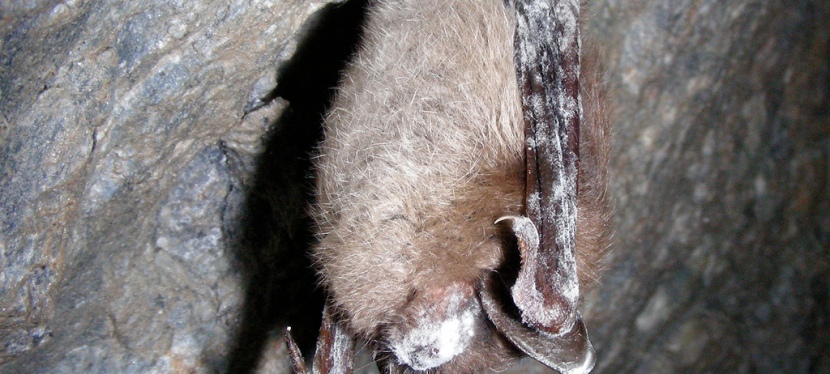Published in August 2021 @HarvestingNature
Since its first identification in a cave in New York in 2006, white-nose syndrome (WNS) in bats has caused significant population declines. White-nose syndrome is caused by a fungus, Pseudogymnoascus destructans, that infects the skin of the muzzle, ears, and wings of hibernating bat species across 35 states and seven Canadian provinces at present[1]. The fungus thrives in cold, damp conditions, perfectly suited for winter cave hibernacula. As it grows, the fungus causes changes in hibernating bats that make them become more active than usual and burn fat they need to survive the winter[2].
Northern long-eared bats (Nyctophilus arnhemensis) suffered a 95 percent population decline in New England between 2006-2012 due to WNS, and are now listed as “threatened” under the Endangered Species Act. Similar declines have been document in the little brown bat (Myotis lucifugus), among others.
While studying WNS and bats in their winter hibernacula, researchers tracked a small number of bats hibernating in home crawl spaces, basements, and other structures like concrete culverts in Martha’s Vineyard, Nantucket, and Long Island, New York. Luanne Johnson with Biodiversity Works reported that these bats were surviving the winter even when affected by WNS.
Crawl-spaces with dirt floors and homes with block foundations and BILCO style hatch doors are attractive bat hibernacula. Uninsulated foundations provide the proper temperature and humidity, allowing bats to hibernate all winter, where insulated foundations were used occasionally. Bats were tracked leaving the hibernacula occasionally in late winter in Martha’s Vineyard where water was available year-round, but the bats returned to continue hibernation and survived to spring.
Unlike WSN-affected bats wintering in cave hibernacula, bats also affected by WSN and utilizing man-made hibernacula maintained good weight and overall health throughout the winter. Some bats were tracked for up to three years without suffering severe complications from WNS. Another behavioral distinction between cave-dwelling bats and those selecting human homes is that the bats wintering in crawl spaces were tracked foraging much later in the fall, meaning these bats may have entered hibernation with better fat stores for a shorter hibernation period.
Additionally, Auteri and Knowles (2020)[3] found genetic evidence of little brown bats evolving with WNS. Allelic frequencies showed significant shifts in survivors for regulating arousal from hibernation, fat breakdown, and vocalizations. Studies by Biodiversity Works and their partners suggest that bats hibernating in homes are less likely to succumb to WNS, allowing more time for bats to evolve to survive the disease. Therefore, Biodiversity Works is working with homeowners tolerant of bats to potentially treat the WNS fungus on their property and construct new hibernacula onsite if homeowners want the bats out of their basement. Also, they are working with contractors and homeowners to heighten awareness of bats hibernating in homes to minimize potential harm from construction or remodels.
[1] White-Nose Syndrome (usgs.gov)
[2] White-Nose Syndrome (whitenosesyndrome.org)
[3] First genetic evidence of resistance in some bats to white-nose syndrome, a devastating fungal disease — ScienceDaily


